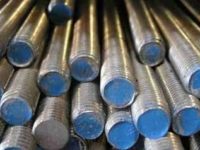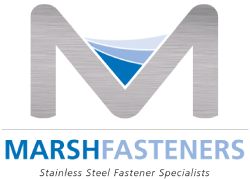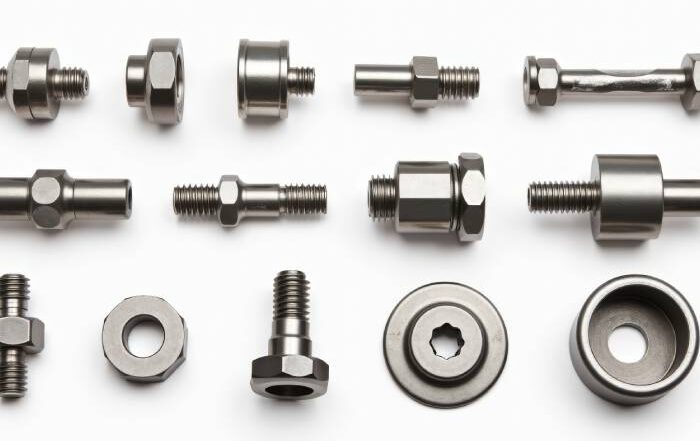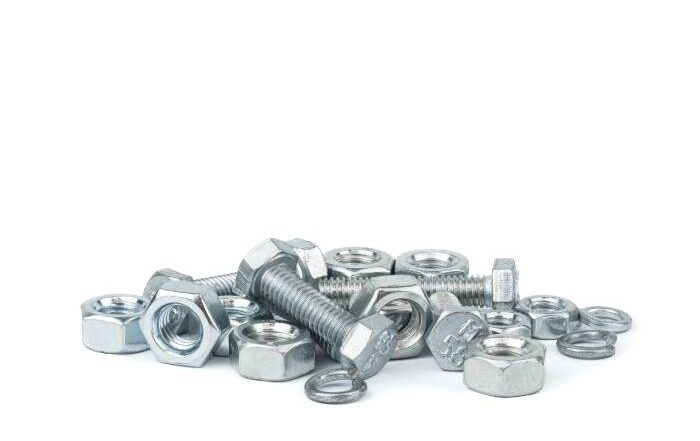
Date Posted:
October 24, 2017
Post Author:
Marsh Fasteners
Categories:
A stainless steel threaded rod is a fastener that is sometimes also referred to as a stud. It is simply a long rod, made of corrosion resistant stainless steel, and threaded on both ends. Designed to be used under tension, some of these rods have threading that covers the entire length of the rod. And others are only partially threaded. It all depends on what they are going to be used for.
Step-by-Step Guide: How to Bend a Stainless Steel Threaded Rod Safely and Effectively
Understanding how to bend a stainless steel threaded rod is essential when working on projects that require custom shapes or tight configurations. While stainless steel offers excellent strength and corrosion resistance, it must be bent with care to avoid damaging its structural properties.
Start by selecting the right workspace. A secure area with good ventilation is critical when using heat sources like propane or oxyacetylene torches. Place two bolts about an inch apart in a sturdy bench vise and fasten them tightly. This setup forms a basic bending jig to support the rod and create a controlled bend radius.
Position the the bolts at the desired bend point. Using your heat source, apply a steady flame to the area where the rod will bend. Monitor the color of the metal closely—once it takes on a reddish glow, it’s soft enough to begin shaping. Avoid overheating, as too much heat can weaken the material and affect the threads’ performance.
Wear gloves and safety goggles during this process, as heated metal and sparks pose serious risks. Once the rod reaches the right temperature, apply even pressure to achieve a smooth, gradual bend. If the rod becomes stiff before reaching the intended angle, you can reheat and continue bending until it holds the desired shape.
Understanding the Limits of Threaded Rod Bending
When working with 304 stainless steel threaded rod, you’ll find it has a moderate level of ductility, making it suitable for many bending applications. Its corrosion resistance and flexibility make it a preferred option for mechanical installations and architectural supports. However, even this versatile grade requires careful handling to avoid thread damage or metal fatigue.
On the other hand, 316 stainless steel threaded rod is more robust and corrosion-resistant, especially in marine or chemical environments. While stronger and more durable, 316-grade rods can be slightly harder to bend, often requiring more heat and force to achieve the same angles. It’s essential to evaluate whether the strength-to-bendability trade-off is appropriate for your project.
Tools That Help with Threaded Rod Bending
Beyond the basic vise-and-bolt setup, experienced installers may use specialty tools to improve consistency and reduce effort. For instance, metalworking jigs and pipe benders can help shape bending stainless steel fasteners to precise angles. These tools also help reduce the risk of accidental thread distortion.
If you’re bending multiple rods to the same angle—say, for a set of mounting brackets or custom hangers—using a template or guide ensures repeatability. Some professionals also use angle finders and protractors to verify the bend’s accuracy.
These tools are especially valuable when handling thicker rods, such as those ½-inch in diameter or more, which require greater leverage or more intense heating. In such cases, investing in professional-grade bending equipment saves time and helps maintain the integrity of corrosion-resistant threaded rods.
Applications That Rely on Custom-Bent Threaded Rods
Bent threaded rods are frequently used in both industrial and residential construction. In HVAC systems, they can serve as custom hangers for ductwork. In the marine industry, curved rods may be shaped to match the hulls of boats or internal framing where straight fasteners won’t suffice.
Even decorative or architectural features—such as spiral staircases or artistic railing structures—might use shaped rods for aesthetic and functional purposes. The ability to manipulate the form of a threaded rod bending guide gives fabricators the flexibility to adapt to unconventional layouts or support needs.
How to Preserve Thread Integrity After Bending
Once the bend is complete, inspect the threads on either side of the bend. Minor distortion can occur during heating and shaping. In cases where threads appear slightly damaged or flattened, a die tool can be used to chase and clean the threads, restoring them for proper fastening.
Avoid tapping or hammering the bent section, as this can further distort the threads or weaken the rod. Let the metal air-cool naturally instead of quenching it in water, which may cause brittleness or stress fractures in the steel.
Trust Marsh Fasteners for Reliable Stainless Steel Rods
Whether you’re working on marine installations, custom mounts, or architectural frames, Marsh Fasteners has the right stainless steel rod for your project. Our selection includes high-quality 304 stainless steel threaded rod and 316 stainless steel threaded rod, both ideal for bending and corrosion-resistant performance.
Need help selecting the right grade or diameter? Our team can guide you through the best options for your application, and our inventory ensures you’ll find the sizes and thread patterns you need.
Contact Marsh Fasteners today to explore the best options for your bent rod applications—and get reliable, high-performance threaded rods every time.
Stainless Steel Threaded Rod Uses
Although primarily used as an anchor to join wood or metal, or to act as a pin to hold objects together, these fasteners are commonly used in heavy carpentry, e.g. hardwood plantation shutters, blinds, shades, and motorized or window shades.
These threaded rods are just about exclusively manufactured in a straight shape. However, if they need to be shaped for any reason, it is possible to do so with the correct care and the right tools.
Need to buy stainless steel threaded rods? Then contact Marsh Fasteners



